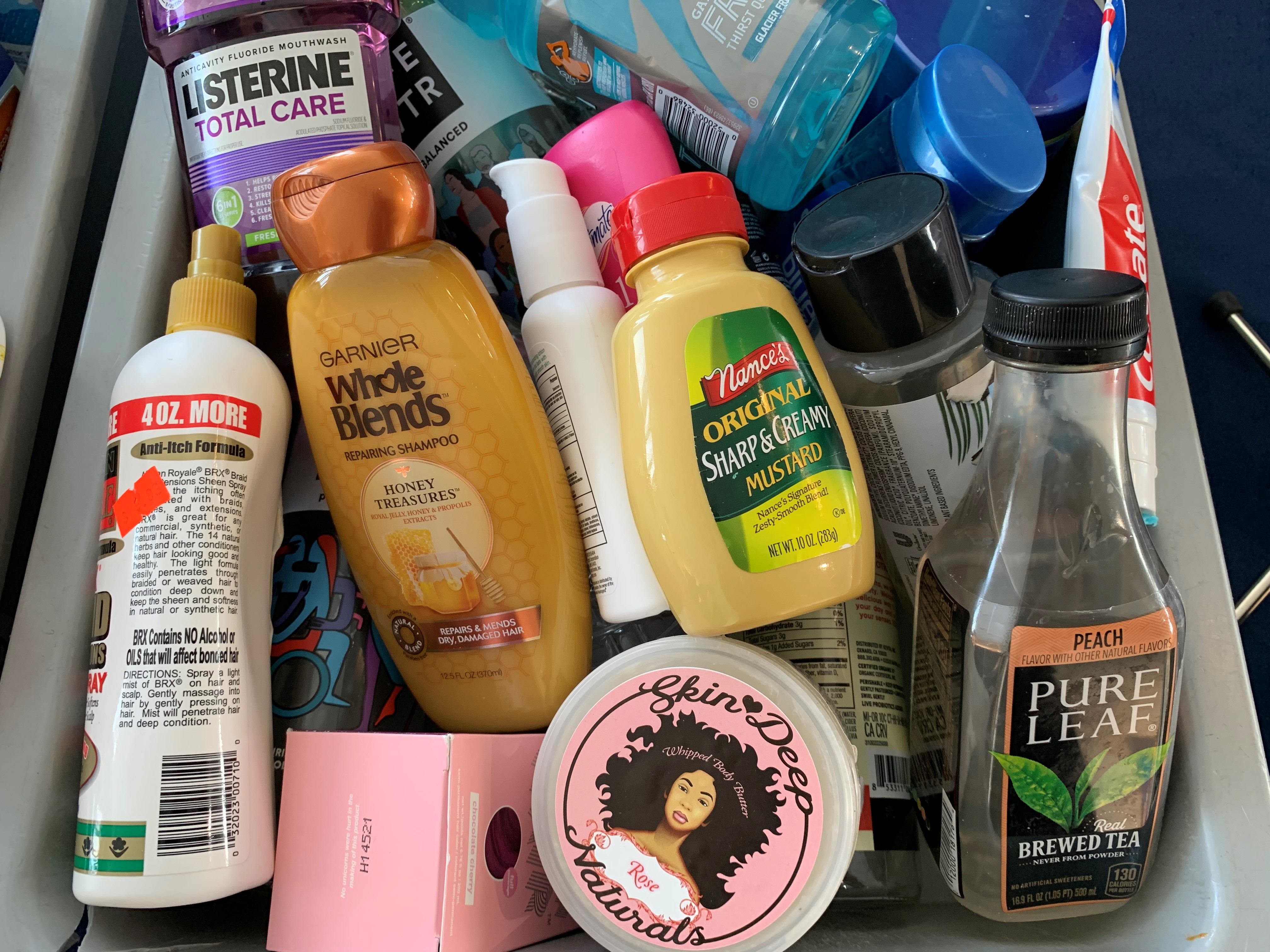 Hundreds of the many oversized liquids, gels and aerosols that triggered an alarm and were removed from carry-on bags at Lehigh Valley International Airport. TSA officers give travelers the choice to re-pack them in a checked bag, return the items to their car, hand them off to a non-traveling companion or voluntarily surrender them to TSA for disposal. (TSA photo)
Hundreds of the many oversized liquids, gels and aerosols that triggered an alarm and were removed from carry-on bags at Lehigh Valley International Airport. TSA officers give travelers the choice to re-pack them in a checked bag, return the items to their car, hand them off to a non-traveling companion or voluntarily surrender them to TSA for disposal. (TSA photo)
ALLENTOWN, Pa.--Spring travel crowds are back at Lehigh Valley International Airport (ABE) and the Transportation Security Administration (TSA) is prepared to handle the increase in passengers. However, the big jump in passengers combined with the limited number of security checkpoint lanes means that passengers need to get to the airport well before their scheduled flight.
“Just like there are rush hours on a highway, there are rush hours in an airport and between 5 and 8 a.m. is the peak travel period here at Lehigh Valley International,” said Karen Keys-Turner TSA’s Federal Security Director for the airport. “Early morning is when this airport is the busiest. It’s when we see in the neighborhood of 500 passengers per hour, which exceeds the capacity of our two-lane checkpoint.”
Part of the airport modernization project will result in the construction of a new ground-level checkpoint with up to four lanes of TSA screening. “These additional lanes will improve the efficiency of the checkpoint experience and when completed this upcoming winter, we will have new state-of-the art technologies incorporated into the checkpoint security operations,” Keys-Turner said.
Face masks continue to be required throughout all domestic transportation modes through April 18, including inside airports. Since the implementation of the face mask mandate in February 2021, there has been near 100 percent voluntary compliance at airport checkpoints. Authorities have reported similar levels of compliance in the surface and rail transportation modes, which together safely transport millions of individuals daily.
Advance planning and packing properly is key to a smooth security checkpoint experience. “Travelers actually play a role in checkpoint efficiency,” explained Don Weston, TSA’s Deputy Federal Security Director. “We ask travelers do to their part by ensuring that they do not have any prohibited items with them at the checkpoint, and instead pack some extra patience. Our officers are seeing a lot of prohibited items at checkpoints, which results in more bag checks that slow checkpoint lines.”
A lot of people haven’t traveled in a long time and they are either unfamiliar with or forgetful about what can and cannot go into a carry-on bag. Bringing carry-on bags without prohibited items is key to an efficient checkpoint experience.
The most common prohibited items that travelers bring to checkpoints are liquids, gels and aerosols that are larger than the allowable limit of 3.4 ounces—shampoo, toothpaste, beverages, sun block, hand lotion, face cream, shaving cream, mouthwash and other toiletries. Each passenger may carry liquids, gels and aerosols that are 3.4 ounces (100 ml) or less through a checkpoint as long as those items fit into a one quart-sized, resealable bag. This is known as the 3-1-1 bag. Larger containers of liquids, gels and aerosols can be transported in checked baggage.
TSA officers are seeing travelers arrive at the checkpoint with bottles of water, juice, energy drinks, coffee and soda. The officers will give passengers the choice to exit the security checkpoint to drink their beverages in the terminal or allow TSA to dispose of it. Travelers may bring empty bottles or insulated flasks through checkpoints and fill them on the secure side of the checkpoint.
The exception to the 3-1-1 rule is that due to the pandemic, TSA is permitting travelers to bring up to one 12-ounce container of liquid hand sanitizer per passenger in carry-on bags until further notice. Passengers can expect that these large liquid hand sanitizers will need to be screened separately, which will add some time to their checkpoint experience.
TSA offers several ways for travelers to find out if an item is permitted in a carry-on bag, checked bag, either or neither. The TSA web site has a feature on the homepage called “What can I bring?”. Type in the name of the item to learn if it should be packed in a checked bag or carry-on bag. The same handy feature is available on the free downloadable MyTSA app.
Travelers also can get assistance with their questions by tweeting questions and comments to @AskTSA or via Facebook Messenger, weekdays from 8 a.m. to 6 p.m. Travelers can call the TSA Contact Center at 866-289-9673 from 8 a.m. to 11 p.m. on weekdays or 9 a.m. to 8 p.m. on weekends and holidays for additional assistance.
